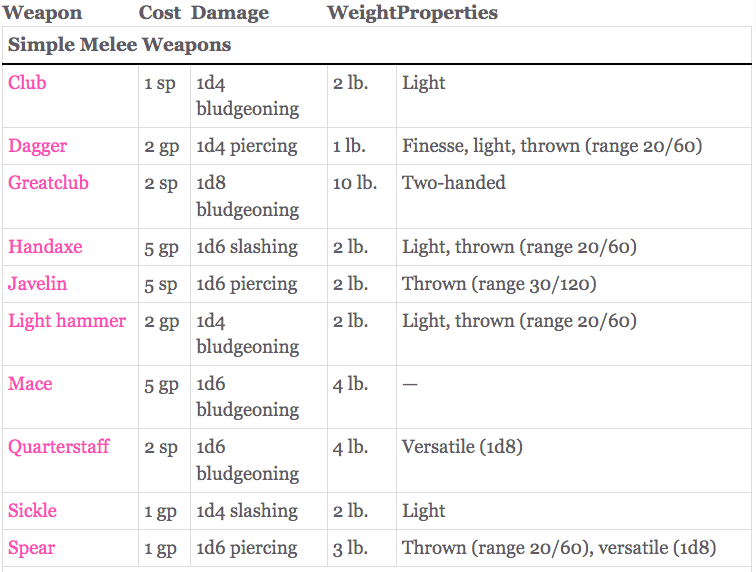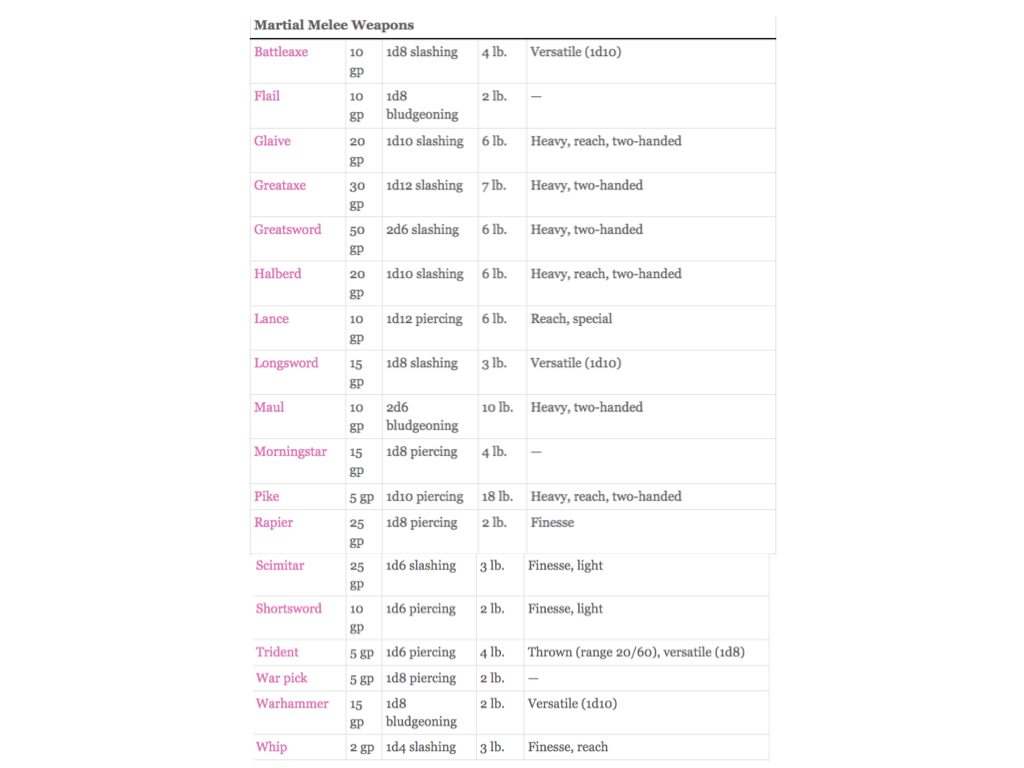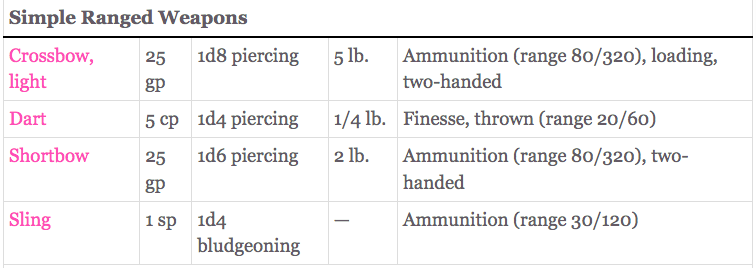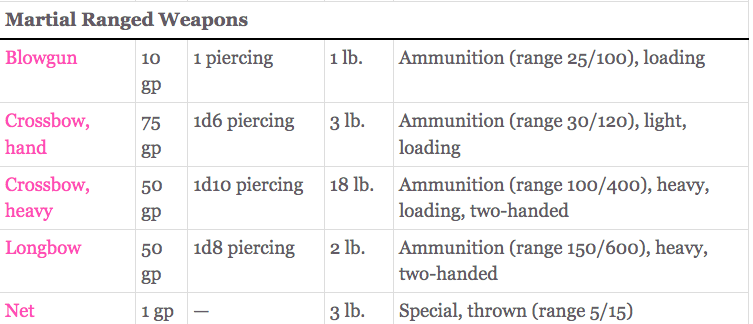Introduction
When diving into the world of Dungeons & Dragons 5th Edition (5e), one of the first choices you’ll make for your character is what kind of simple weapons 5e they’ll wield. For many adventurers, simple weapons are the go-to choice. But why are they so important? Let’s explore the realm of simple weapons in 5e and understand why they are a staple in any adventurer’s arsenal.
What Are Simple Weapons 5E?
Simple weapons in 5e are, as the name suggests, basic and straightforward weapons. They are designed to be easy to use and are accessible to all classes. Unlike martial weapons, which require specific training, simple weapons can be effectively wielded by anyone, from the lowliest wizard to the mightiest barbarian.

Why Choose 5E Simple Weapons?
The main allure of simple weapons lies in their accessibility and ease of use. Every class in 5e has proficiency with simple weapons, making them a versatile choice for any character. Whether you’re creating a new character or equipping a backup weapon, simple weapons are a reliable choice.
Simple Weapons List in 5e
Simple weapons are divided into two categories: melee and ranged.
Melee Weapons
- Clubs
- Daggers
- Greatclubs
- Handaxes
- Javelins
- Light Hammers
- Maces
- Quarterstaffs
- Sickles
- Spears

Ranged Weapons
- Light Crossbows
- Darts
- Shortbows
- Slings

Detailed Analysis of Melee Simple Weapons 5E
Clubs
Clubs are the epitome of simplicity. A heavy stick with a thick end, clubs are easy to craft and use. They deal a decent amount of damage (1d4 bludgeoning) and are perfect for characters who need a straightforward weapon.
Pros: Easily obtainable, simple to use, no special training required. Cons: Low damage compared to other weapons.
Daggers
Daggers are small, versatile blades that can be used for both melee and throwing attacks. They deal 1d4 piercing damage and have the finesse and light properties, making them ideal for dexterous characters.
Pros: Versatile, can be thrown, finesse weapon. Cons: Low damage output.
Greatclubs
Greatclubs are larger versions of clubs, dealing 1d8 bludgeoning damage. They are two-handed weapons, requiring more strength to wield effectively.
Pros: Higher damage than a regular club. Cons: Requires two hands, making it less versatile.
Handaxes
Handaxes are small, one-handed axes that can also be thrown. They deal 1d6 slashing damage and are perfect for characters who want a balance between melee and ranged capabilities.
Pros: Can be thrown, decent damage. Cons: Limited range when thrown.
Javelins
Javelins are long spears that can be thrown. They deal 1d6 piercing damage and have a good range, making them excellent for characters who prefer to keep their distance.
Pros: Good range, versatile for melee and ranged. Cons: Limited to piercing damage.
Light Hammers
Light hammers are small, one-handed hammers that can be thrown. They deal 1d4 bludgeoning damage and are a solid choice for characters needing a simple ranged option.
Pros: Can be thrown, simple to use. Cons: Low damage output.
Maces
Maces are one-handed bludgeoning weapons that deal 1d6 damage. They are effective against armored foes and are a staple for many clerics.
Pros: Good against armored enemies, solid damage. Cons: Heavier than other simple weapons.
Quarterstaffs
Quarterstaffs are versatile, two-handed weapons that deal 1d6 bludgeoning damage (1d8 when used with two hands). They are a favorite among monks and spellcasters.
Pros: Versatile, can be used with one or two hands. Cons: Requires two hands for maximum damage.
Sickles
Sickles are small, curved blades that deal 1d4 slashing damage. They are light and easy to handle, often used by druids.
Pros: Light, easy to handle. Cons: Low damage output.
Spears
Spears are long, one-handed weapons that can also be thrown. They deal 1d6 piercing damage (1d8 when used with two hands) and are very versatile.
Pros: Versatile, can be thrown, decent damage. Cons: Limited to piercing damage.
Detailed Analysis of Ranged Simple Weapons 5E
Light Crossbows
Light crossbows are easy-to-use ranged weapons that deal 1d8 piercing damage. They are great for characters who need a reliable ranged option without complex mechanics.
Pros: Good damage, easy to use. Cons: Requires loading between shots.
Darts
Darts are small, throwable weapons that deal 1d4 piercing damage. They are lightweight and can be carried in large quantities.
Pros: Easy to carry, can be thrown. Cons: Low damage output.
Shortbows
Shortbows are simple ranged weapons that deal 1d6 piercing damage. They have a good range and are perfect for dexterous characters.
Pros: Good range, decent damage. Cons: Requires two hands.
Slings
Slings are one of the simplest ranged weapons, dealing 1d4 bludgeoning damage. They are easy to make and use, perfect for characters with limited resources.
Pros: Easy to make, simple to use. Cons: Low damage output.

Choosing the Right Simple Weapon for Your Character
When selecting a simple weapon, consider your character’s class, abilities, and playstyle. For instance, a wizard might prefer a dagger for its versatility, while a cleric might choose a mace for its effectiveness against armored foes.
Customizing Simple Weapons
Even simple weapons can be customized and enhanced. Enchanting a simple weapon can turn a mundane item into a powerful tool. Additionally, adding unique traits through roleplaying can give your weapon a personal touch.
Strategies for Using Simple Weapons Effectively
To make the most of simple weapons, combine them with your character’s abilities and spells. Use your environment to your advantage and remember that positioning and tactics can often outweigh raw damage output.
Conclusion
Simple melee weapons in 5e are essential tools for any adventurer. Their ease of use, accessibility, and versatility make them a valuable choice for players of all experience levels. Whether you’re wielding a club, a dagger, or a spear, understanding the strengths and weaknesses of these weapons will enhance your gameplay and ensure your character is well-equipped for any challenge.
FAQs
- What is the best simple weapon in 5e? The best simple weapon depends on your character and playstyle. Daggers and spears are popular for their versatility.
- Can simple weapons be enchanted? Yes, simple weapons can be enchanted, making them as powerful as some martial weapons.
- How do simple weapons compare to martial weapons? While martial weapons generally deal more damage, simple weapons are easier to use and accessible to all classes.
- Are simple weapons good for beginners? Absolutely! Their ease of use and versatility make them perfect for beginners.
- What classes benefit the most from simple weapons? Classes like clerics, druids, and wizards often benefit the most due to their limited weapon proficiencies.